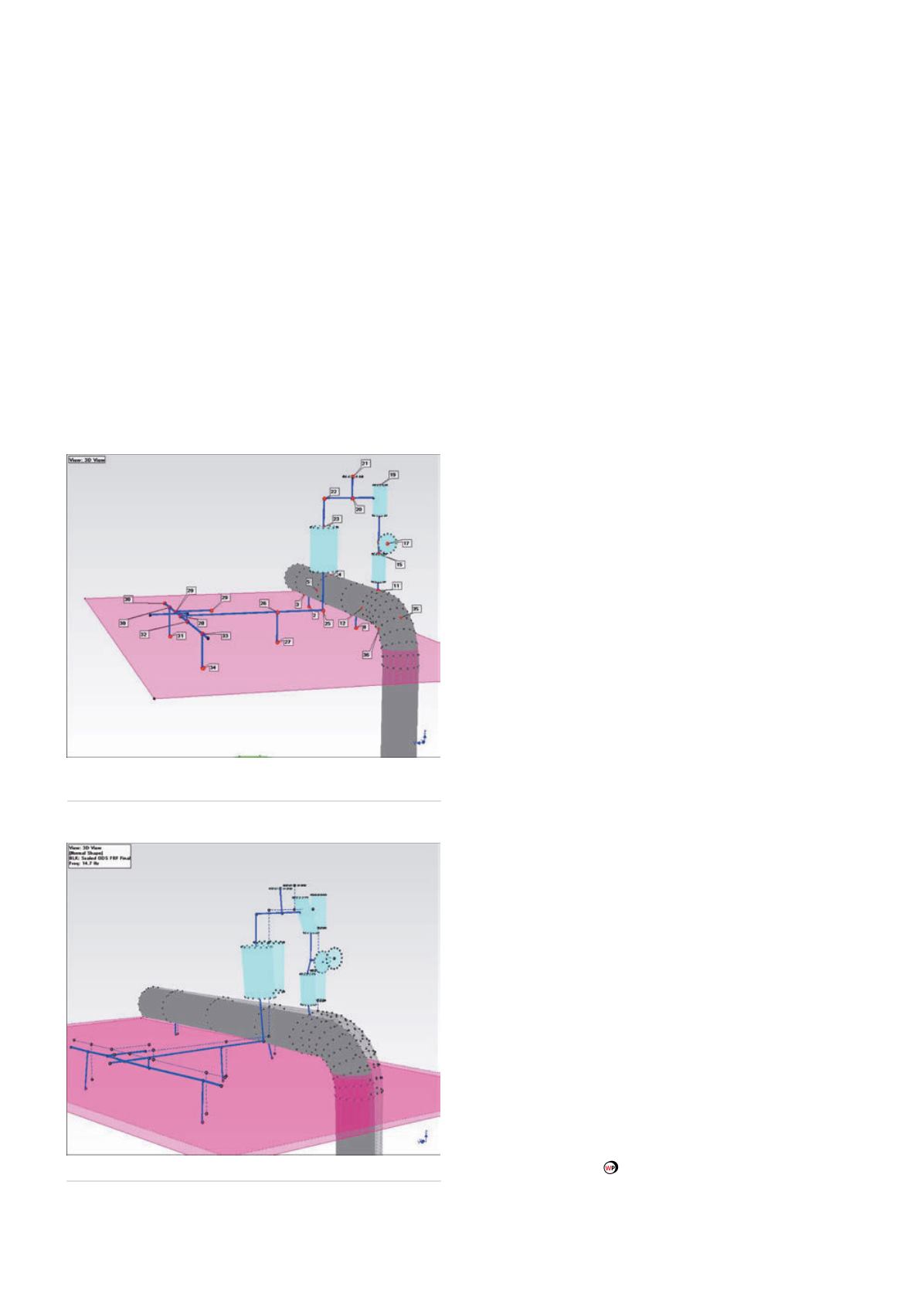
support points, small bore connections, valves, and finally,
supporting structure.
In some ways ODS analysis resembles modal analysis,
which is concerned with the natural frequencies and
mode shapes of multiple DOF systems, however, the main
differences with ODS are as follows:
)
)
Modal analysis will identify all modal responses of the
system that could ‘potentially’ be excited.
)
)
ODS will identify only those modal frequencies, which are
being excited at that time.
)
)
ODS will also identify any other vibration mode shapes
caused by forced excitation i.e. not occurring at a
structural natural frequency.
Causes of the consequent excessive vibration vary, but
may include: forces generated by the item itself, inadequate
support systems, unbalances, and external loads.
In ODS analysis, the degree of vibration in an item is
measured and clearly visualised using specialist software,
making the decisions connected with maintenance, adjustment
and optimisation much better informed and more likely to
succeed than may otherwise have been the case.
Who needs ODS analysis, and why?
A powerful tool that permits the clear and detailed
visualisation of vibration, ODS can be used to pinpoint
problems in a range of machinery, tools and structures,
particularly those involving periodic excitation, and in a
number of industrial and engineering settings. What is more,
ODS analysis can be carried out while the plant is in operation,
so there is no downtime – this is often a particular advantage
in manufacturing environments.
The key advantages of timely ODS analysis include, but are
not limited to:
)
)
A powerful tool for vibration trouble-shooting.
)
)
A means of capturing a complex vibration baseline for
comparison against future surveys.
)
)
Increased equipment longevity (for example, by reducing
the damage caused by fatigue).
)
)
Increased productivity (mainly through reductions in
equipment failure, increased equipment efficiency, less
downtime for unplanned maintenance).
)
)
Assured compliance with environmental, legal and
regulatory requirements.
)
)
Detailed information about equipment performance
and status, which allows managers to make appropriate
decisions about equipment lifecycles, repair and
investments.
The unplanned maintenance of equipment and related
structures, such as piping and support systems, is often
responsible for significant disruption and thus production
losses, so it makes sense for manufacturers to turn to a
specialist partner to complete ODS analysis, such as AVT
Reliability.
Such partnerships give manufacturers and others not only
access to expertise in ODS analysis, but also to the company’s
ability to generate, present, model, and enact appropriate
solutions. AVT Reliability uses ODS analysis to identify areas
of concern and to provide comprehensive guidance regarding
possible changes and their outcomes. That way, ODS analysis
can be used to solve the problems caused by excessive
vibration before they cause major – even catastrophic –
issues, and helps the client to make fully informed, pragmatic
decisions about investment, modifications and the lifecycles
of their equipment.
Figure 4.
Showing ODS results.
Figure 3.
ODS Plot showing measurement locations of the
‘zoomed in’ section.
50
World Pipelines
/
FEBRUARY 2016


